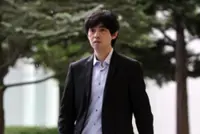
e4736bd1-5b33-4be3-952b-0342e1eb28a0_0a18df0a
China reached new heights in science this year, climbing to 11th place on the Global Innovation Index and leading the world in the number of most-cited papers.
Chinese scientists have made leaps, from space to the deep sea to quantum and supercomputing. Before the year ends, we look back on significant scientific developments in China over the past 12 months.
Unlock 30% Savings on Ad-Free Access Now!









































